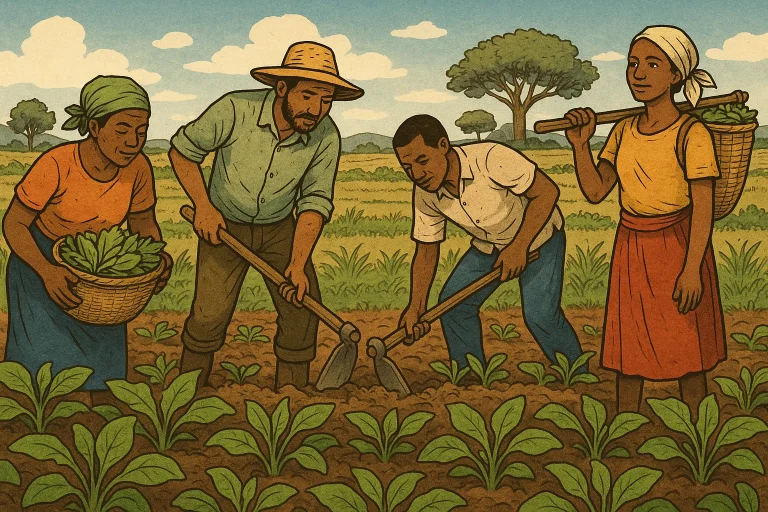A new global analysis has revealed that the world needs to invest US$443 billion annually to help smallholder farmers adapt to climate change — an amount less than what is currently spent each year on agricultural subsidies that harm the environment and public health.
The report, conducted by Climate Focus on behalf of Family Farmers for Climate Action, a global alliance representing 95 million small-scale producers across Africa, Latin America, Asia, and the Pacific, was released ahead of the COP30 climate summit, where adaptation is expected to dominate discussions.
According to the study, smallholder farmers who cultivate 10 hectares or less require an average of US$952 per hectare annually—equivalent to US$2.19 per day—to build resilience and adapt to the growing impacts of climate change.
This figure is lower than the US$470 billion the United Nations estimates governments spend each year on agricultural subsidies that damage ecosystems, and just a fraction of the US$1.4 trillion developing nations spend annually servicing debt.
Despite their vital role in global food security—producing half of the world’s food calories and supporting 2.5 billion livelihoods—smallholder farmers receive only US$1.59 billion in adaptation funding, or 0.36% of what is needed, the report found.
“This is not charity, but an investment in food security for people around the world,” said Elizabeth Nsimadala, President of the East African Farmers Federation (EAFF), which represents 25 million smallholders. “Smallholder farmers are essential to global supply chains for crops like rice, wheat, cocoa, and coffee. Investing in their adaptation benefits everyone.”
Thales Mendonça, an agroforestry farmer from southern Brazil and representative of the Intercontinental Network of Organic Farmers’ Organizations, described investing in smallholders as both “an economic necessity and an ecological imperative.”
“We are pioneering agroecological practices that restore nature’s safety net,” he said. “Supporting smallholder farmers to scale up this work is the fastest way to move from scarcity to abundance.”
At COP30, negotiators are expected to agree on indicators to measure progress toward global adaptation goals and develop national adaptation plans. However, specific indicators for financial flows to smallholder farmers remain absent, and uncertainty persists over whether developed nations will fulfill their pledge to double adaptation finance to US$38–40 billion by 2025.
The Brazilian COP30 Presidency has outlined an agenda to mobilize funding for sustainable and resilient agriculture, including agroecology, and to amplify the voices of family farmers through the People’s Circle initiative.
Esther Penunia, Secretary General of the Asian Farmers Association (AFA) representing 12 million smallholders, urged governments to commit to greater adaptation finance:
“Our farms are being ravaged by storms, droughts, and heatwaves. The best way to build resilience is to channel funding directly to family farmer organizations and establish a new, dedicated farmer resilience fund.”
Echoing the same call, Ibrahima Coulibaly, Chair of the Network of West African Farmers and Producers Organizations (ROPPA), representing 30 million family farms, said:
“Every dollar directly supporting farmers against climate chaos is a shield against hunger. The time for promises is over; we need massive, direct financing now to sustain food production and feed our communities in the future.”
The report reinforces a growing consensus that redirecting global agricultural spending toward climate adaptation for smallholder farmers is not only more cost-effective but also essential for ensuring global food security and achieving a just climate transition.


